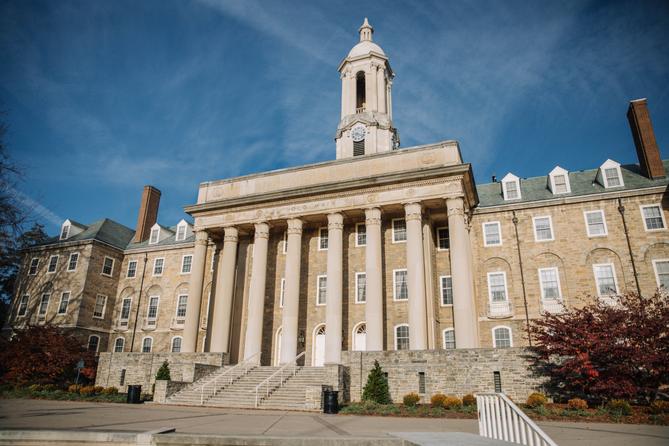This story first appeared in Talk of the Town, a weekly newsletter by Spotlight PA’s State College regional bureau featuring the most important news and happenings in north-central Pennsylvania. Sign up for free here.
STATE COLLEGE — The public is getting a bit more insight into the workings of Penn State University, thanks to two recent measures — one from the Pennsylvania legislature and the other from university leadership. Advocates who have long called for the university to be more transparent, while cautious, said the changes are steps in the right direction.
A funding bill for Pennsylvania’s four state-related universities — Penn State, Lincoln University, the University of Pittsburgh, and Temple University — passed in November, nearly five months after the budget deadline, unlocking hundreds of millions of dollars in taxpayer funds to offset tuition costs for in-state students. The legislature did not increase the funding it sent to Penn State, Pitt, and Temple.
In an October op-ed published during the funding debate, Penn State President Neeli Bendapudi wrote that her university was proactively releasing a report and website with “information our lawmakers and the public request most often, and that demonstrate Penn State’s value to Pennsylvania.”
Penn State’s 11-page accountability report, published Nov. 1, contains enrollment data, graduation rates, and demographic information about students and faculty. The president noted in her op-ed that much of the information in the report and the accompanying website is already available to the public in various locations.
Spotlight PA asked Penn State if there was additional context about what prompted the university to create the report beyond what Bendapudi wrote in her op-ed. The university’s Office of Strategic Communications did not respond to the request.
Michelle Rodino-Colocino, president of the Penn State chapter of the American Association of University Professors, told Spotlight PA the university’s new website eases access to important data, such as financial disclosures that show Penn State’s strong cash flow. However, the new report does not provide a full picture of the university, Rodino-Colocino wrote in a statement.
“It would be a mistake for people to think they are getting the full picture on ‘equity’ at Penn State by consulting the ‘Equity’ [section], for example, which shows falling numbers of tenure track Black faculty and rising numbers of those employed in administration,” she wrote. “And where are reports on racial and gender pay inequity?”
Rodino-Colocino added that any look at equity at Penn State should reference the “More Rivers to Cross” reports, which detailed decadeslong failures by Penn State to attract and retain Black faculty and the experiences of Black faculty at the university.
Real accountability won’t be achieved until Penn State is fully subject to disclosure under Pennsylvania’s open records law, Rodino-Colocino wrote.
Although Penn State receives taxpayer money, the university’s special “state-related” designation grants it more independence than public universities in other states and largely shields it from being legally required to make documents available to the public upon request.
Concerns from state lawmakers about transparency and affordability at the state-related universities slowed the funding process this budget cycle. In an effort to get more insight into the workings of state-related universities, the legislature passed a separate bill in November that increased what the universities must publicly disclose.
The new requirements mandate that the universities release financial information for specific academic and support units, provide details of contracts valued at more than $5,000, and detail the salaries of the 200 highest-paid employees (the previous law required only the top 25). Penn State already complies with other directives in the new law, such as posting the meeting minutes of its board of trustees.
The law also requires that each state-related university make the information accessible to the public on its website.
A Penn State spokesperson wrote in an email to Spotlight PA that the university “has not yet determined where the information will be housed” and that Penn State will follow the new law.
Terry Mutchler, the founding executive director of the Pennsylvania Office of Open Records, said Penn State should be applauded for increasing transparency, though she said it should be a tempered applause.
The university leadership and its board of trustees have a responsibility, given the public funding, to improve its transparency and how it communicates about the level of disclosure, said Mutchler, a transparency expert who is a Penn State alumna.
“People are afraid of it, they are afraid of being transparent because they think somebody is going to play ‘gotcha.’ And I think Penn State is better than that,” Mutchler said. “It’s a world-class institution.”
SUPPORT THIS JOURNALISM and help us reinvigorate local news in north-central Pennsylvania at spotlightpa.org/donate/statecollege. Spotlight PA is funded by foundations and readers like you who are committed to accountability and public-service journalism that gets results.
